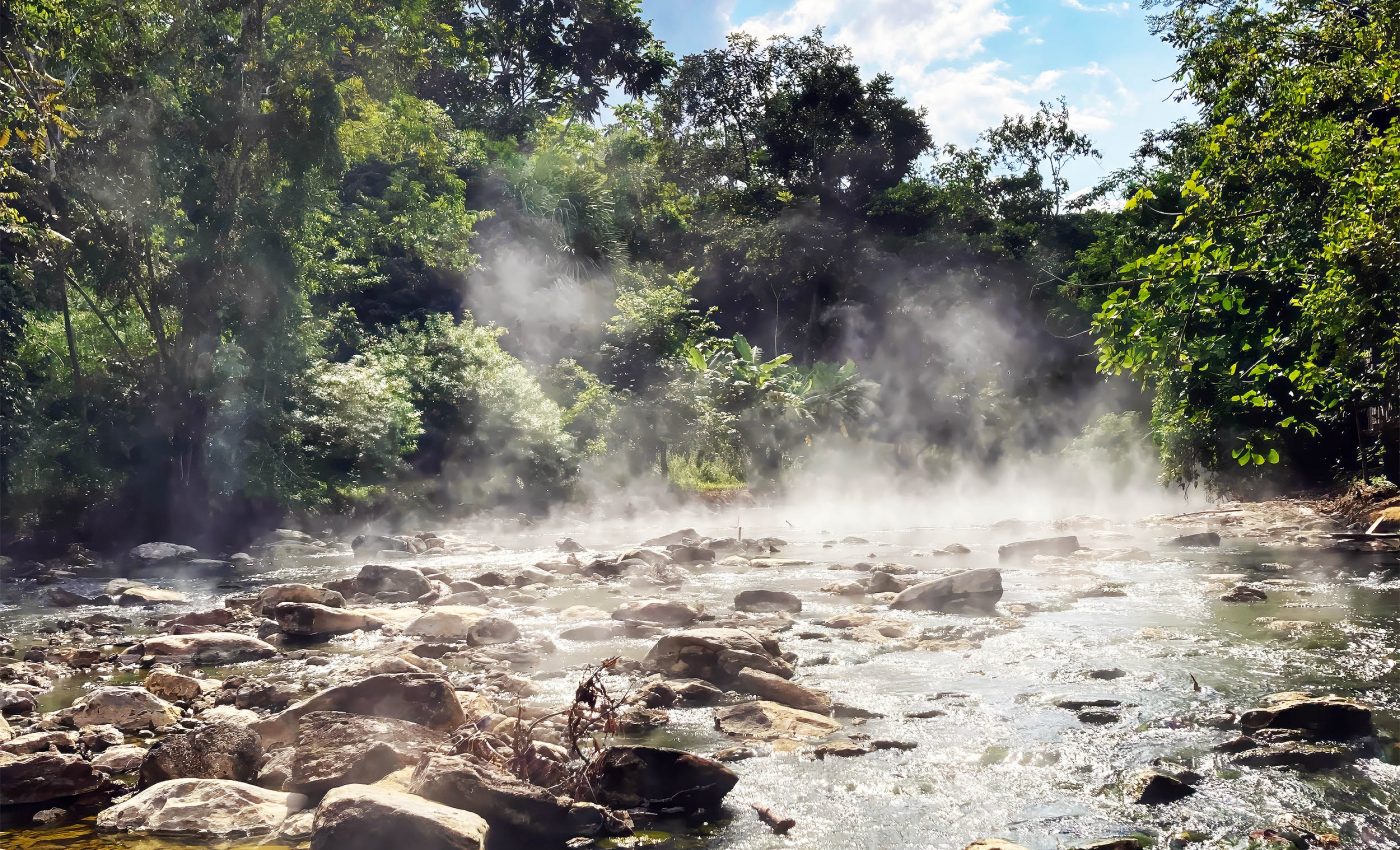
One river in the Amazon rainforest is so hot that it literally boils, destroying nearby biodiversity
Legends about a boiling, scalding river that roasts anything that falls inside may sound like fiction. Yet nestled in the Peruvian rainforest, a curious waterway proves these stories are far from mythical.
Its waters can reach 210°F, a temperature that can cause severe burns within seconds. For decades, local communities spoke of a place so hot that small animals perish upon touching its surface.
The “Boiling River” in Peru
The “Boiling River” is located in the Mayantuyacu region of central Peru. The river’s length is around 4 miles, and it can be up to about 20 feet wide in some sections.
A team of scientists led by Riley Fortier, a graduate student at the University of Miami, surveyed 70 sites along this tributary.
“It really provides us a window into the future because the Amazon will get hotter whether we like it or not, so this allows us to understand what increases in temperature will do to the forest composition,” said Riley Fortier, lead author on a study of the site published in Global Change Biology, and a graduate student in professor Kenneth Feeley’s Jungle Biology lab.
The team wanted to see how extreme heat shapes the surrounding forest.
By mapping the tree and plant species from cooler upstream areas down to the scalding heart of the river, they discovered a startling drop in biological variety.
Findings showed an 11% decline in biodiversity for each 1.8°F rise in average temperature.
Why the boiling river boils
Geoscientists attribute the heat to fault-fed activity, where underground water channels meet Earth’s geothermal energy.
A fault is a large fracture in the crust that provides a direct path for scorching fluid to surge toward the surface.
Researchers believe that rainwater infiltrating sedimentary rock becomes superheated below ground. It then emerges as a system of hot springs converging with the main watercourse, creating a natural cauldron.
“You stick your hand in, and you will see second or third degree burns in a matter of seconds,” said Ruzo, who first measured the river’s peak heat.
Signs of changing forests
Many local inhabitants regard the site with deep respect because anything that wanders too close risks a painful encounter.
Certain plants thrive on the fringes, but most large creatures struggle with the sweltering environment. Adaptations are limited for organisms facing water that can reach coffee-brewing temperatures.
“Overall, the tree community is less diverse, so we see fewer species in hotter spots,” Fortier said. “And forest composition was also more homogenous in the warmest locations, whereas in cooler forest plots, there was more plant diversity.”
Botanical surveys from cooler sections toward the hotter stretches revealed how tree diversity narrows. In place of thick canopies, the research team documented more scrubby vegetation.
“Over the course of dozens of miles, you might expect to see dramatic changes like that, but in the small sampling area that we had, you typically wouldn’t see such a clear change in composition,” Fortier added.
Small species adapted to drought-like conditions gained ground as the mercury rose. Larger, slower-growing trees faded away, reflecting how intense heat reshapes even lush ecosystems.
Boiling rivers and future climate
Fortier’s data suggest that as worldwide temperatures climb, similar shifts could spread across other lowland rainforests.
Changes may include declines in species that cannot handle additional heat and a rise in those more comfortable with higher temperatures.
Scientists note that an environment featuring fewer tree varieties will likely support fewer types of animals too. The loss of one group often sends ripples through the entire food web.
The boiling tributary, known locally as Shanay-Timpishka, meaning “boiled with the heat of the sun,” stands as a stark example of what could happen if average temperatures continue to climb.
Areas that were once rich in wildlife may morph into simpler, drier landscapes. Observers hope that studying this natural hotspot will inspire careful planning to protect sensitive habitats.
Even though the river is unique, it signals what may lie ahead for places currently seen as safe havens for biodiversity.
Ongoing investigations
Researchers plan to gather long-term data and explore whether flora and fauna can adapt to persistently higher temperatures. They will also watch for signs of any species shifting to cooler pockets.
Some scientists are examining whether the warming patterns near this location might parallel broader trends in tropical zones.
They predict that more forests around the globe could face intense thermal stress, forcing communities to adapt or relocate.
Feeley’s lab will continue its research of the boiling river, since it is such a unique place that could portend much about our natural world.
“You can’t heat a whole forest, at least not artificially, which is one of the coolest aspects of the boiling river,” Fortier added.
The study is published in Global Change Biology.
—–
Like what you read? Subscribe to our newsletter for engaging articles, exclusive content, and the latest updates.
Check us out on EarthSnap, a free app brought to you by Eric Ralls and Earth.com.
—–













